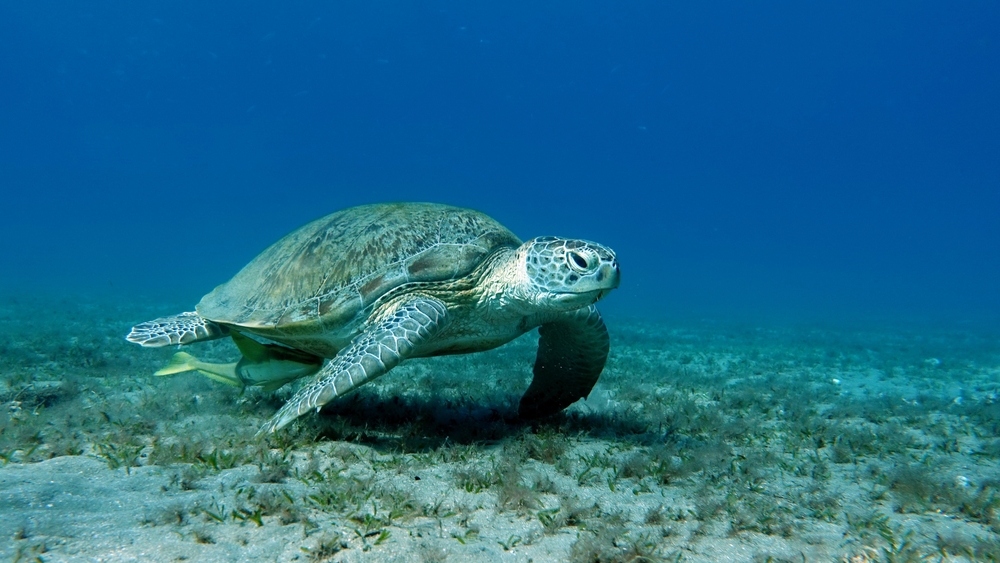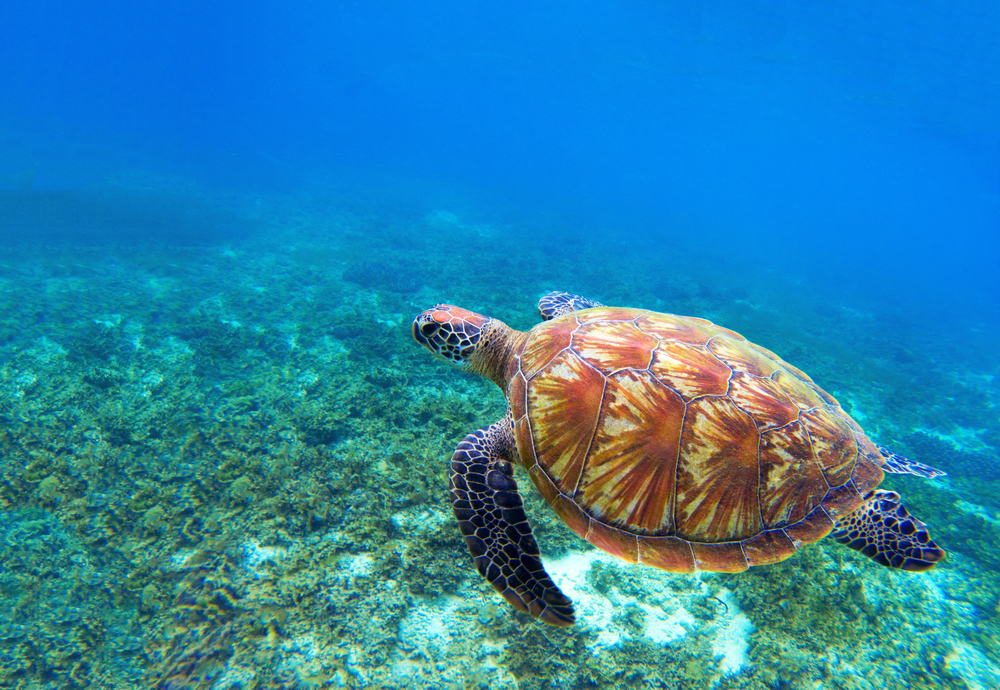Your cart is currently empty!
Green Sea Turtles Make a Triumphant Return from the Brink of Extinction

For centuries, the story of green sea turtles has been a quiet tragedy beneath the waves. Hunted for their meat, fat, shells, and eggs, caught in fishing lines, and displaced by eroding coastlines, their numbers fell so sharply that extinction seemed all but inevitable. These creatures, which have swum in Earth’s oceans for over 100 million years, were nearly wiped out by human exploitation and neglect. Yet, against all odds, these ancient mariners have made a stunning recovery. The International Union for Conservation of Nature (IUCN) has officially removed green sea turtles from its endangered species list, marking a triumph decades in the making and a moment of hope for conservationists around the world.

A Remarkable Recovery Story
When the IUCN first classified green sea turtles as endangered, it sent an urgent message to the world: human activity had pushed one of the ocean’s oldest species to the brink of extinction. For much of the 20th century, the trade in turtle shells and eggs flourished across coastal nations, fueling both local economies and global black markets. Their beautiful shells were turned into jewelry, their eggs sold as delicacies, and their meat consumed widely. Nesting beaches, once safe havens for generations of female turtles, were stripped bare by development and tourism, leaving fewer and fewer places for them to lay eggs safely. Pollution, boat strikes, and plastic waste added new threats that turtles could not evolve fast enough to overcome.
But the tide began to turn thanks to global conservation efforts that spanned continents and generations. From new coastal protection laws to the creation of wildlife sanctuaries, an international coalition of scientists, governments, and local communities united under a shared goal to keep the turtles alive. Today, the IUCN reports that green sea turtle populations have rebounded by nearly 28% since the 1970s, prompting their official status change from “endangered” to “least concern.” This does not mean their struggles are over, but it signifies a powerful step toward recovery. Roderic Mast, co-chair of the IUCN’s Marine Turtle Specialist Group, described the milestone as “a powerful example of what coordinated global conservation over decades can achieve.” It is a rare and uplifting reminder that environmental healing, though slow and complex, is possible when persistence, science, and empathy intersect.

How Conservation Turned the Tide
The road to recovery was anything but simple. Several key strategies, developed through trial and error over decades, converged to safeguard the species. One of the most critical efforts involved protecting nesting grounds. Conservationists prioritized beaches where female turtles lay their eggs, working closely with local residents to patrol these areas and deter poachers. In regions such as Costa Rica and Australia, community-led initiatives became lifelines for turtle populations. Villagers who once hunted turtles began protecting them instead, understanding that their survival brought long-term benefits to ecosystems and local economies alike. This sense of ownership transformed conservation from an external effort into a deeply rooted cultural practice.
Sustainable fishing practices also played a major role. One of the largest threats to turtles came from accidental capture, known as bycatch, in commercial fishing nets. To tackle this issue, engineers and fishers collaborated to design Turtle Excluder Devices (TEDs), which allow turtles to escape when caught in shrimp trawlers. The widespread adoption of TEDs across global fisheries reduced turtle mortality rates dramatically. In some regions, the implementation of seasonal fishing restrictions and the use of circle hooks: designed to avoid catching turtles: further decreased unintended deaths.
Crackdowns on illegal trade were equally vital. Through global cooperation, countries strengthened anti-poaching laws, monitored marketplaces, and worked with customs agencies to eliminate the once-thriving trade in turtle shells and eggs. In Southeast Asia, education programs helped reduce demand for turtle-based products, proving that cultural change could complement legal enforcement. Meanwhile, habitat protection and restoration efforts created safe feeding and nesting zones. Coastal restoration projects rebuilt dunes, planted vegetation to prevent erosion, and limited beachfront lighting that disorients hatchlings trying to reach the sea. These combined measures offered green turtles a fighting chance to recover.

The Role of Science and Technology
Science and technology have quietly revolutionized how conservationists understand and protect sea turtles. Satellite tracking, genetic studies, and data analytics have helped researchers uncover the mysteries of migration and nesting behavior. According to the National Oceanic and Atmospheric Administration (NOAA), satellite telemetry allows scientists to monitor how climate change affects turtle routes, feeding grounds, and breeding cycles. These data points help conservationists identify critical habitats that need protection and anticipate emerging threats, such as warming ocean currents or shifting food supplies.
Thermal imaging cameras and drone monitoring are now used to count nests and track hatchling success rates with minimal disruption. These innovations allow scientists to gather accurate information without physically interfering with sensitive nesting sites. In addition, DNA analysis has provided insights into population genetics, helping researchers trace family lineages and identify which populations are most vulnerable. The blending of traditional ecological knowledge with cutting-edge tools represents a model for future conservation:a partnership between modern science and age-old wisdom about the natural world.

The Bigger Picture: What the Recovery Means for the Planet
The green sea turtle’s comeback is more than just a conservation success story; it is a signal that ecosystems can rebound when given a chance. Turtles play an essential role in maintaining seagrass beds and coral reef ecosystems, both of which are foundational to marine life. By grazing on seagrass, turtles keep it short and healthy, preventing it from overgrowing and suffocating the seabed. Healthy seagrass, in turn, provides nurseries for fish and helps store significant amounts of carbon, contributing to the fight against climate change. Coral reefs also benefit, as turtles help maintain the balance of algae, ensuring reefs remain vibrant and resilient.
Despite their improved status, green sea turtles remain vulnerable. Rising sea levels threaten nesting beaches, while ocean pollution and plastic waste continue to pose significant hazards. Studies have shown that many turtles accidentally ingest plastic, mistaking it for jellyfish, which can cause internal injuries or starvation. Climate change further complicates matters, as rising sand temperatures on nesting beaches can skew sex ratios in hatchlings: since warmer sand produces more females. If this imbalance continues, it could create reproductive challenges in the future. The recovery of green sea turtles, while heartening, is therefore a fragile achievement that requires continued vigilance and adaptation.

A Model for Future Conservation
The story of the green sea turtle serves as a blueprint for saving other endangered species. It demonstrates how long-term global cooperation, sustained funding, and local engagement can reverse centuries of damage. It also reveals the importance of adaptability: strategies that succeed in one region may need to be modified for another. In many coastal communities, former poachers have become turtle guardians, leading eco-tourism projects and educating visitors about marine life. This transition has not only saved turtles but also created sustainable livelihoods rooted in environmental stewardship.
Examples of such programs are spreading across the world. In Indonesia, the Bali Sea Turtle Society releases thousands of hatchlings into the ocean each year, transforming conservation into both a cultural celebration and a tourism draw. In Florida, volunteer networks monitor nesting beaches around the clock during breeding season, collecting data that supports scientific research. These efforts show that conservation can be a collective endeavor where governments, scientists, and ordinary citizens work together. Protecting biodiversity does not have to rely solely on government intervention: it flourishes through community passion and persistence.
Lessons in Hope and Responsibility
In a world where environmental headlines often paint a bleak picture, the revival of green sea turtles stands as a beacon of hope. It reminds us that nature can recover when we act with care and consistency. Every policy implemented, every cleanup organized, and every individual choice to reduce plastic use contributes to a broader movement of restoration. The ocean, vast and ancient, responds to human behavior. Its creatures adapt, but they need time and protection to do so.
The turtle’s story also carries a moral weight: humanity has the power both to destroy and to heal. The question is which legacy we choose to leave behind. As climate challenges intensify, stories like this one prove that hope is not naive: it is necessary. The green sea turtle’s survival is a living example of how resilience and compassion can reshape the future of our planet.
Conclusion: A Future Worth Protecting
When a species as ancient as the green sea turtle finds its way back from the edge of extinction, it challenges our assumptions about what is possible. Their story is one of endurance and of nature’s remarkable ability to heal when given a chance. While they may no longer be endangered, their safety depends on continued respect for the delicate ecosystems they inhabit. The IUCN’s decision is not an endpoint, but a milestone: a moment to celebrate progress while recognizing the work that remains.
In celebrating their return, we rediscover our own role in the interconnected web of life. The ocean has spoken through its oldest travelers, and its message is both simple and profound: when humanity listens, life can thrive again.
